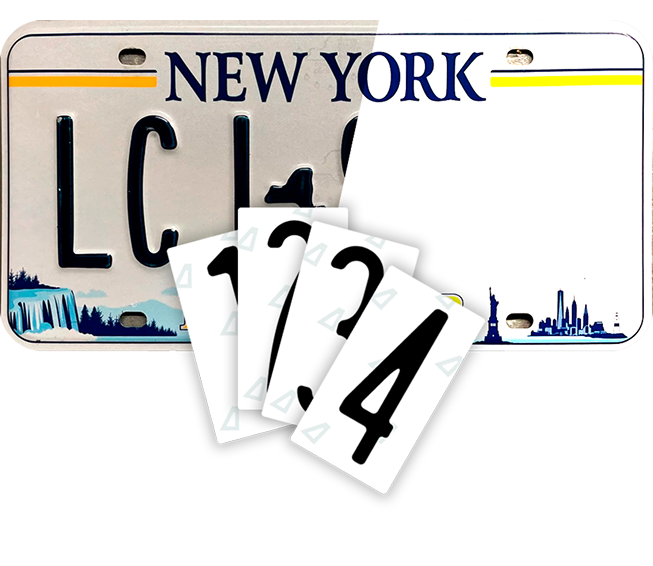Riding a motorcycle is a symbol of independence, but it also places you in situations where you may need to defend your rights — especially during a traffic stop. Being pulled over by law enforcement can be intimidating, but knowing your bikers rights can make a huge difference in how the situation unfolds.
Whether you're commuting daily or cruising on weekends, you should understand what you're required to do and what your rights are when interacting with police officers. This article will walk you through your rights, relevant laws, and how tools like Nanofilm Ecoslick™ can play a role in your visibility and compliance.
Bikers Rights and What You Must Show During a Stop
When stopped on your motorcycle, you still retain your basic rights. You are required to present:
- A valid motorcycle license or endorsement
- Vehicle registration
- Proof of insurance
But beyond that, your bikers rights allow you to:
- Remain silent after providing your ID
- Decline a search unless the officer has a warrant or probable cause
- Record the interaction in most states (check local laws)
- Ask if you're free to go
It's critical to stay calm, avoid escalation, and never argue on the side of the road. If you believe the stop is unfair, handle it later through proper legal channels — not on the spot.

Alite Blackout
Stealth in a сlick
test
Learn moreMotorcycle Rider Rights and Plate Visibility
Motorcycle riders often draw extra attention during traffic stops due to gear, noise, or plate positioning. If your license plate is partially covered, angled upward, or unreadable in low light, police are more likely to stop you for visibility issues — even if you're riding safely.
That’s why many riders turn to passive protection tools like Nanofilm Ecoslick™ — a black nanofilm license plate sticker that helps obscure your plate from automated recognition systems without using illegal tints, flips, or mechanical blocks.
Motorcycle Laws: What Can Trigger a Stop
Knowing your local motorcycle laws is one of the best ways to prevent unnecessary police interaction. Common reasons officers pull over motorcyclists include:
- Lane splitting in states where it’s not allowed
- Loud exhaust or illegal underglow lighting
- Missing side mirrors or reflectors
- Incomplete documentation
- Suspicious or altered license plate appearance
If your bike has any modifications, carry receipts or certification if possible — especially if the changes affect plate visibility, lighting, or emissions compliance. Officers may question visual alterations, even if they’re legal.

Folding frame Alite Flipper
Stealth in a click
test
Learn moreMotorcycle Helmet Law: A Common Violation
A key rule that varies across the U.S. is the motorcycle helmet law. In some states, all riders must wear DOT-certified helmets. In others, riders over a certain age may ride helmet-free if they meet specific insurance or medical requirements.
Not wearing a helmet where required is one of the quickest ways to be stopped and ticketed. Even more — it can become a liability in case of an accident.
To avoid trouble:
- Always wear a helmet that meets DOT (or ECE) standards
- Don’t assume what’s allowed in one state applies elsewhere
- When traveling, check each state's helmet laws before you cross the border
Helmet law enforcement is strict, especially in high-traffic zones and border regions.

Alite Nanotapes
Click and Stick
test
Learn moreHow Much Is Motorcycle Insurance and Why It Matters at Stops
One of the first things an officer will ask for is proof of coverage — and that opens the door to a more personal line of questioning. Officers may ask how much is motorcycle insurance, whether your coverage meets the minimum state requirement, or if your bike is listed on the policy.
Cost varies widely based on:
- Age and riding experience
- Motorcycle type and modifications
- Region and accident statistics
- Coverage levels (liability-only vs full coverage)
It’s essential to keep your insurance active, current, and easily accessible. Carry printed proof in your gear or store it digitally on your phone if allowed.

Nanofilm Ecoslick
Anti-radar stickers
test
Learn moreYour Rights After the Stop
If you believe the stop was unfair or involved profiling, you have the right to:
- Document what happened (write it down immediately after)
- Request body cam footage or dash cam records
- File a formal complaint with the police department
- Seek legal advice to explore follow-up options
These are part of your motorcycle rider rights, and they exist to protect you from harassment, bias, or unnecessary escalation.
Understanding bikers rights, staying compliant with local motorcycle laws, and respecting your state’s motorcycle helmet law all significantly increase your chances of having a smooth and uneventful encounter with law enforcement. When you know exactly what’s expected from you — and what your rights protect — you’re more confident, calm, and in control during a stop.

Nanofilm Ecoslick Material
Anti-radar material
test
Learn moreKeeping your documents organized, your insurance valid, and your bike free of illegal modifications helps prevent unnecessary attention. And if you use tools like Nanofilm Ecoslick™, ensure they’re applied responsibly and legally.
You don’t need to ride in fear of being stopped — you just need to ride smart, prepared, and informed.
Check Out: Top 5 tips for motorcycle safety in the city













